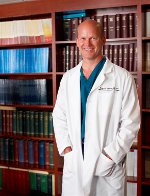 Robert LaPrade, MD, a complex knee surgeon with The Steadman Clinic in Vail, Colo., and chief medical research officer for the Steadman Philippon Research Institute, discusses the biggest trends and challenges in sports medicine research today. Q: What are the biggest trends in sports medicine research and development today?
Robert LaPrade, MD, a complex knee surgeon with The Steadman Clinic in Vail, Colo., and chief medical research officer for the Steadman Philippon Research Institute, discusses the biggest trends and challenges in sports medicine research today. Q: What are the biggest trends in sports medicine research and development today?Dr. Robert LaPrade: The biggest trends in sports medicine research and development today primarily are centered around articular cartilage, high quality MRI imaging and biomechancially and clinically-validated anatomic reconstructions. Because of the high participation rates of American youth in sports and the aging baby boomers, further development of articular cartilage resurfacing procedures are still a high priority in sports medicine research.
Concurrent with this, biologic means to treat both articular cartilage damage and ligament damage are also concurrently being investigated at multiple research labs. In order to be more objective about articular cartilage pathology and to follow articular cartilage resurfacing procedures more effectively, high-field MRI imaging of articular cartilage is also a high priority for sports medicine.
In addition, hip preservation surgery, which centers around restoration of normal hip anatomy and labral function, as well as multiple ligament injury treatment of the knee with biomechanically and clinically validated anatomic reconstruction paired with early motion and physical therapy to restore function, are also high-priority sports medicine research and development topics.
Q: How can sports medicine physicians contribute to the future development of the field with their research today?
RL: There are several ways that sports medicine physicians can contribute to the future development of their field with their research. First, further development of improved means to resurface articular cartilage injuries, combined with high-field MRI imaging, which will tell us how well these surgeries are doing non-invasively after surgery and will lead to more effective ways to treat the large number of patients with symptomatic articular cartilage defects of multiple joints.
In addition, with an expected 10-fold increase in hip arthroscopy expected over the next 10 to 15 years, outcome studies which validate surgical techniques to both restore the normal hip anatomy and to restore labral integrity by repairs or reconstructions will be very important to validate these techniques. Furthermore, careful follow-up of patients with objective and subjective patient-scored measures to validate multiple ligament injuries is necessary to further improve the patient function so that these athletes and sports medicine weekend warriors can continue to improve their function after these devastating injuries.
Q: What types of projects are making the biggest impact on how sports medicine is delivered in the future?
RL: In addition to the above topics, we are in a very exciting turning point in the delivery of sports medicine care. I believe that the next few years will be very similar to the development of arthroscopy, which rapidly advanced the treatment of intra-articular joint pathology. In particular, the use of growth factors, bone marrow aspirates and utilizing one's own stem cells may mark a turning point in the treatment of many pathologies.
In particular, the identification of specific means to deliver one's own growth factors or stem cells to treat a particular pathology should result in improved patient outcomes and long term function over time. In particular, the durability of repair tissue will become an important factor in the evaluation of these treatments over time.
Q: What development are you most excited about in sports medicine for the next year?
RL: I believe that one development that will most affect how we treat patients over the next year will be the further validation of the use of growth factors and stem cells, in effect biologic treatments in peer review literature. Unfortunately, multiple different means to look at growth factors and stem cells have been put forward in human trials without any validation in animal models.
There should be much more validation in animal models which will help differentiate which techniques have the most promise, with clinicians who correlate their work with their veterinary colleagues, providing us with more objective data about which growth factors, biologic adjustments and stem cell methods may hold the most promise to patients with sports medicine pathology.
More Articles on Sports Medicine:
12 Sports Medicine Physicians on the Move
Orthopaedic Foundation for Active Lifestyles Honors Dr. Richard Steadman
12 Orthopedic Surgeries for Professional Athletes


